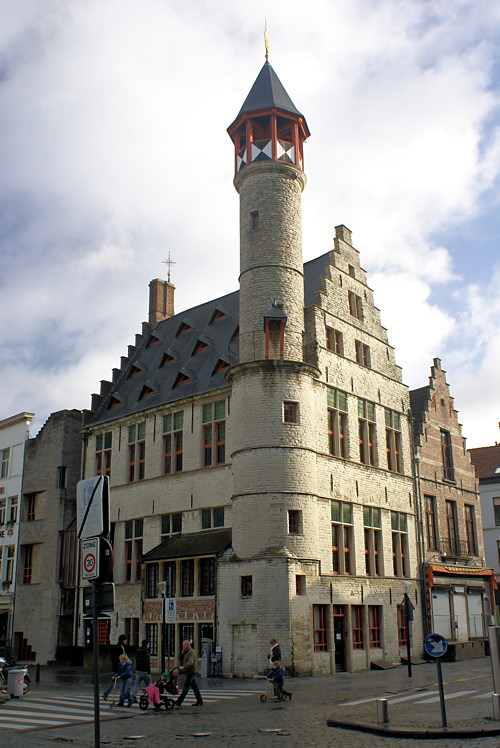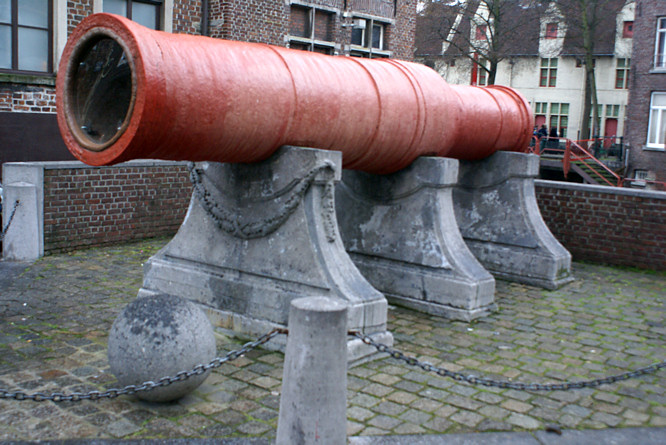Toreken Tanners guild house in Ghent
The gothic building in the south eastern corner of the Vrijdagsmarkt Friday market with the capped tower is called the 'Toreken'. It was a guild house of the skin traders or tanners guild in medieval period around 1450AD.

The tower was used to dry skins. From the little tower most of the new trade regulations were read aloud to everyone present on the square. In 1540, Emperor Charles V terminated the guilds' power. The Toreken became the property of private owners who regularly altered or re-designed it.
In 1883, the building became City of Ghent property and it was frequently hired out. However, after World War II, the building stood empty for a long time and started to decay. It was restored between 1978 and 1983. It is now owned by a bank and has become the venue for many cultural exhibitions.
The ground floor, which was used for storing, working, and trading, is rather austere. The guild hall ceiling on the first floor with tie-beams resting on carved corbels is much more attractive. The second floor and the attic are also very impressive.

Ghent's Dulle Griet Mons Meg Cannon
'Dulle Griet' is the name of a large primitive medieval siege canon painted red on display in the area of the Vrijdagmarkt that boarders the canal. It dates from the first half of the 15th century. The wrought-iron cannon was constructed from 32 longitudinal bars enclosed by 61 rings. The canon was capable of firing huge cannonballs of 340 kg.
The gun weighs 16400 Kg is five meters long with a caliber of 650mm. Siege warfare didn't demand rapid fire, mobility or accuracy, but it demanded great firepower and the ability to quickly breach a castle wall. In 1452, the cannon was employed by the city of Ghent in the siege of Oudenaarde, but fell into the hands of the defenders on the retreat and was only returned to Ghent in 1578.
It was also used to defend the commercial port of Ghent. Today, the cannon is set up close to the Friday Market square in the old town. The front opening of the canon has been closed because drunks saw the canon as his private bedroom. Dulle Griet named after Mad Meg, a tough Flemish girl who according to Flemish Folklore lead an army of women to pillaged hell.
This is a very important and special military weapon. Notice that this cannon does not have wheels. It was transported to the battle field by wagons and then dug into a trench before it could be fired. One of the greatest problems was the huge recoil. To absorb it a system of wooden beams and wedges were installed. But after several shots these beams were smashed and had to be replaced. Even a lead plate that was put just behind the gun didn't help. The problem disappeared only when wheeled carriages were introduced in newer models.
Loading procedure was quite a complicated issue. A large and well-trained crew was necessary to load the supergun. The coverage of the crew from enemy fire was provided by wicker mantlets shields and fences made of wooden planks. The cannon was protected by a movable shield that had to be raised manually before shooting.
Travel books

